Space Camera 3 (Live)
11 Sep 2011
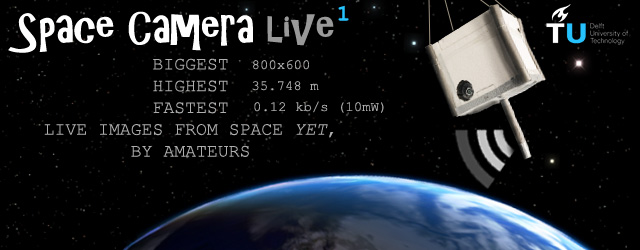
This mission was special as it had a live camera broadcast from the payload. It used a 5mW transmitter on 433 MHz to send JPEGs with forward error correction down at baud (bits per second) levels up to 1200.
Image livestream, sending the largest, highest, fastest images ever sent in realtime from the stratosphere by amateurs, with 10mW of radio power – as much as a single LED. We had two payloads attached to a weather balloon, and reached 36km altitude. We sent out and received live images as it was flying, plus GPS information, that everyone could receive and automatically post online for everyone to see – in real time! All scripts, PCB designs, etc, are all available for you under a creative commons licence. I’ll be posting those later. Feel free to leave a comment below, providing some feedback, e.g. stating what we can do better next launch, what sensors you would like to see in them, etc!
Flight Statistics
| Cost | €150 (just helium+balloon) |
| Launch | 12:36 (11-09-2011 Delft Netherlands) |
| Touchdown | 15:00 (11-09-2011 Heereveen Friesland) |
| Burst | 14:26 |
| Recovery | 15:55 |
| Flight Time | 2h24m |
| Max. Altitude | 35.748 m (#28 arhab record) |
| Total Weight | ~1300g |
| Main Payload | Beagleboard/GPS/GPRS/Webcam/Radio |
| Backup Payload | Arduino/GPS/GPRS/Cutdown |
| Cutdown | Yes, Hot-Wire |
| Pictures Taken | 1731 Pictures |
| Pictures Sent Live | 123 Pictures |
| Pictures Received Live | 119 Pictures |
| Data Received Live | 6.000.000 bits |
| Max Data Rate | 1.200 bits/s |
| Largest image sent live | 800×592 px (#1 record) |
| 3D Distance Traveled | 205 km |
| Minimum inside temp | +5°C |
| Radio Power | 10mW (434.653MHz, 8n2) |
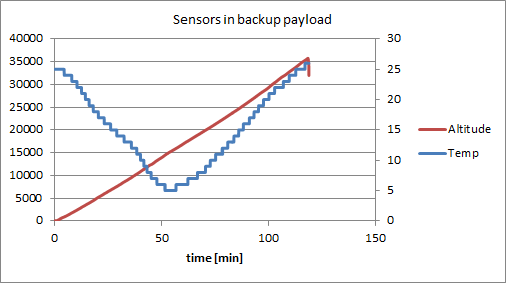
You can clearly see a steady velocity in height. The temperature data is from the backup-payload inside the plastic container. This confirms my theory that you dont need to worry about isolation for temperature, as there is little mass to transfer the cold at -50C at 30km altitude.
Images
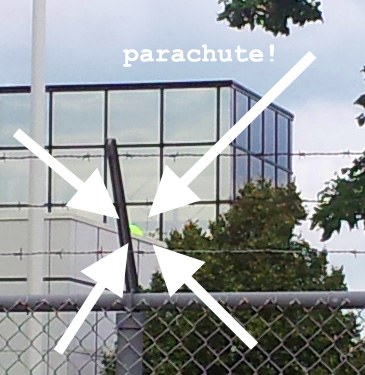
From the outside of a building, we saw the parachute danling on the building
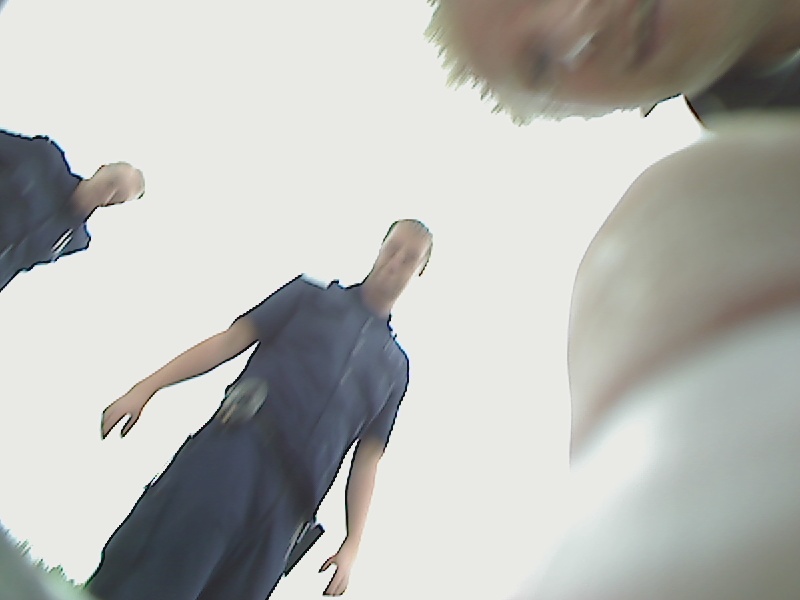
When we found the payload (observe the security guys in the back) it was still taking pictures
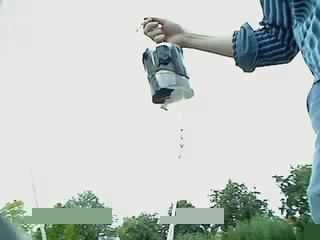
A live image
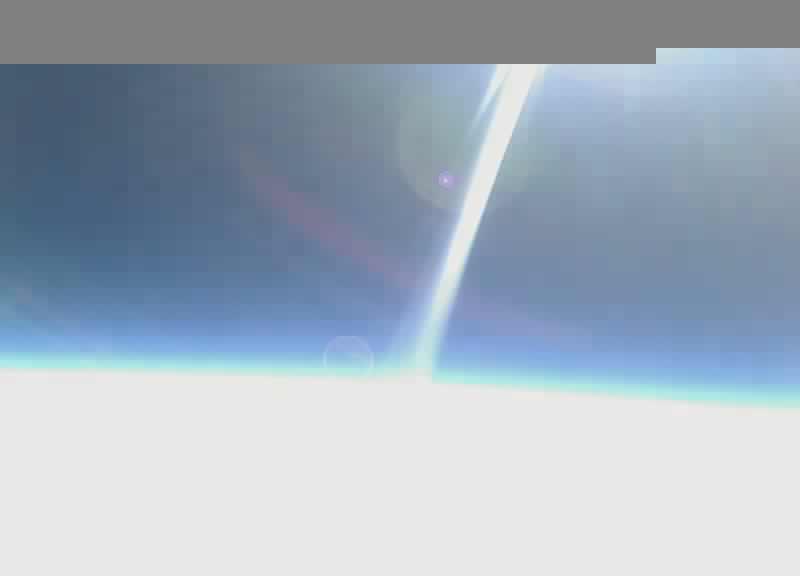
A live image
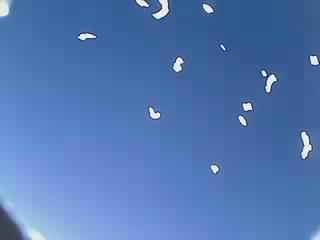
A live image
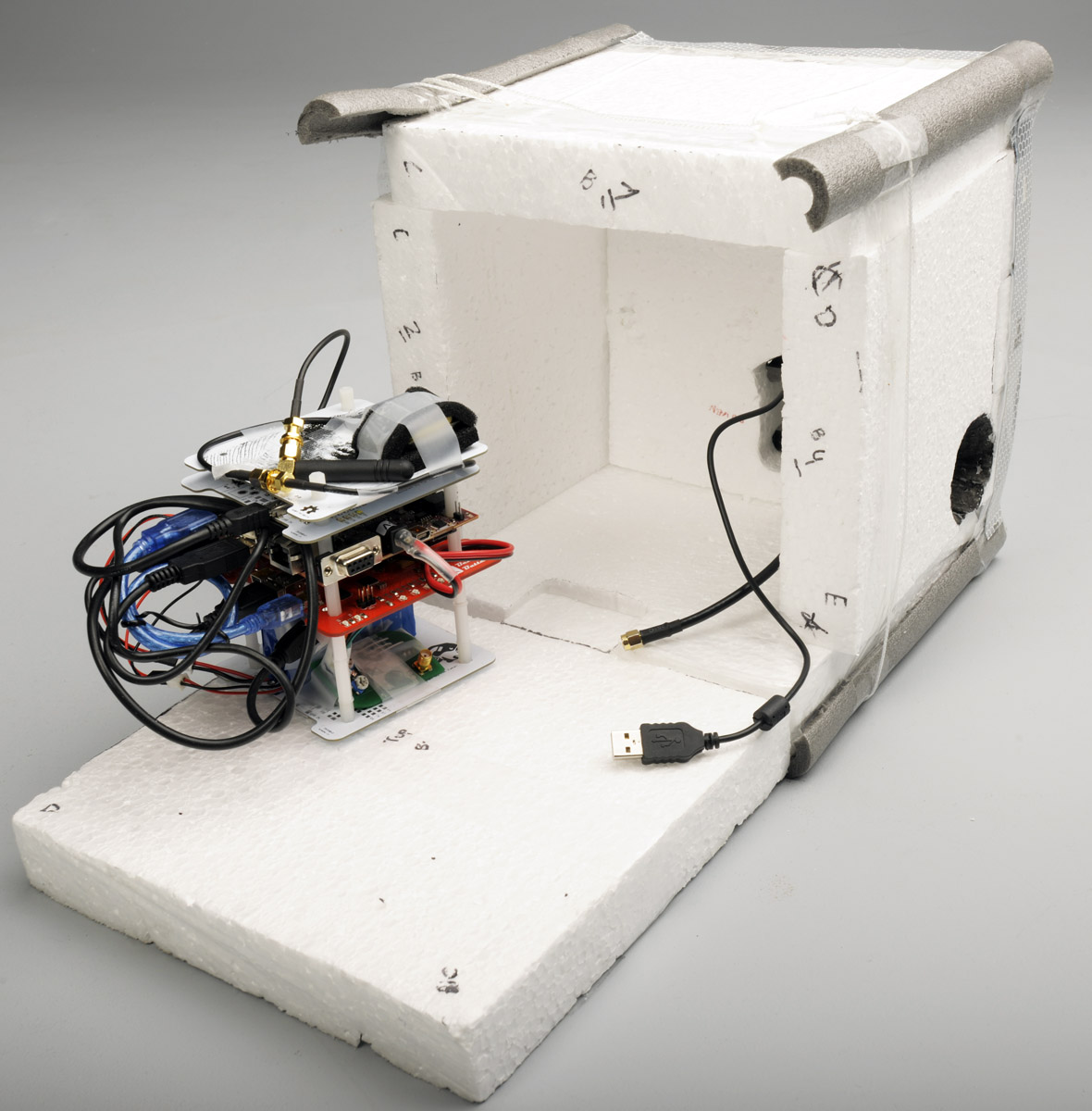
The main payload
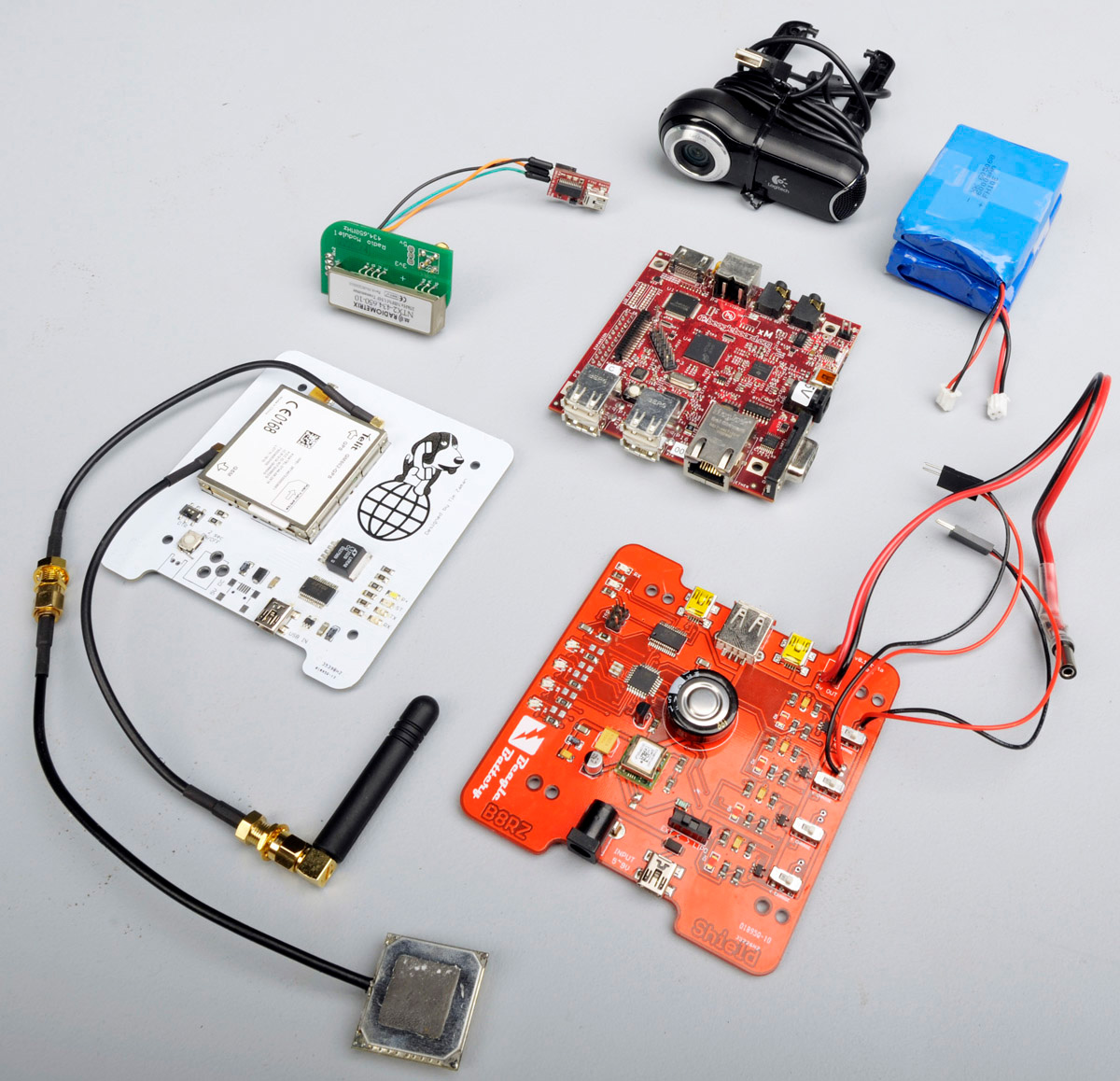
Contents of the payload
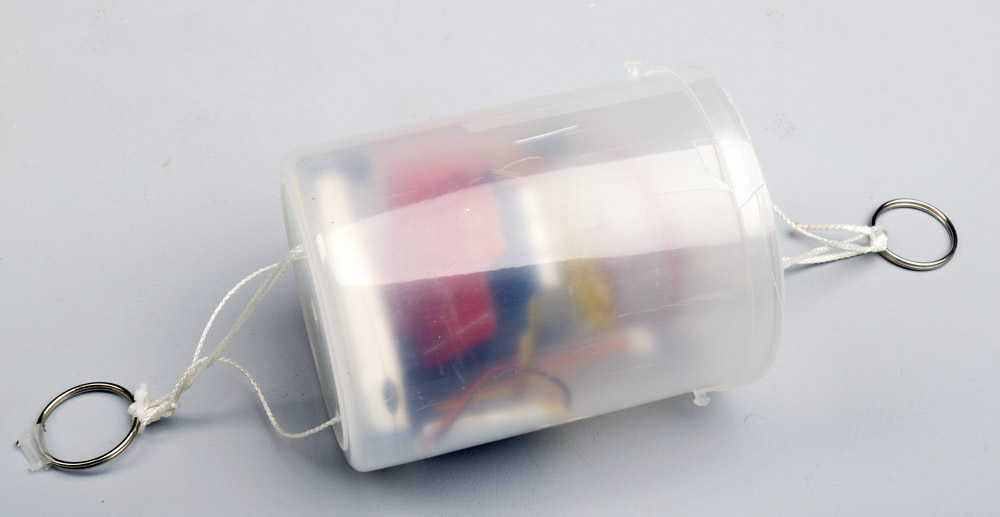
The secondary payload was a cutdown mechanism
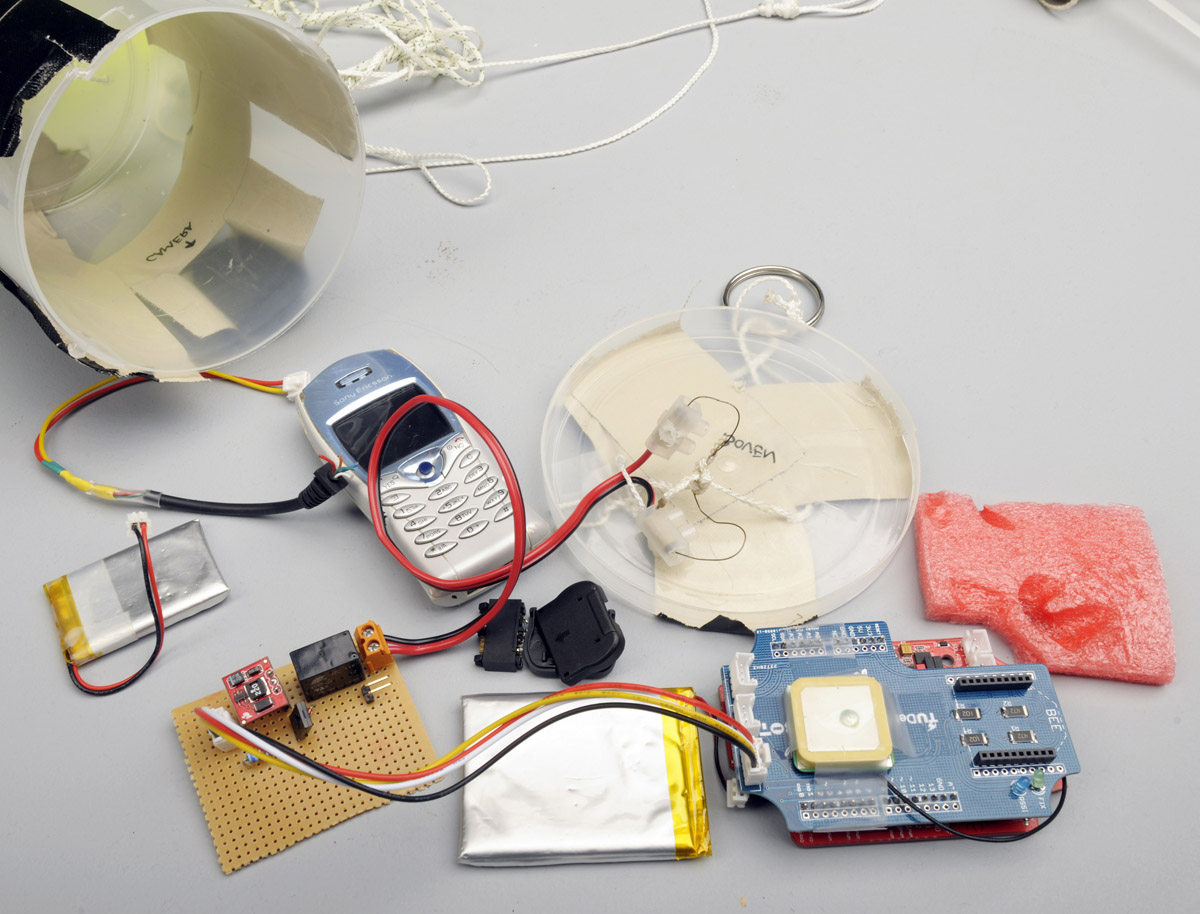
Contents of the cutdown mechanism
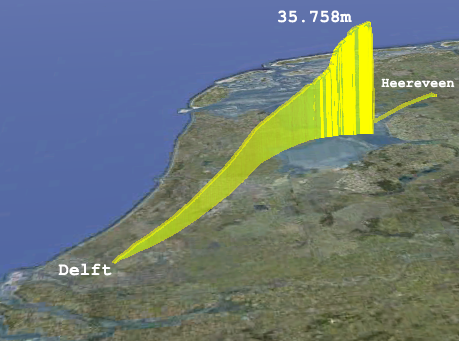
The full route. Notice the GPS height cut off at 35km due to international regulations.
Live transmission
1700 images taken, 123 images sent. Sending an image took between 10seconds and 60 seconds. Within the time of sending an image, the webcam had taken much more. So, which one should it send next? The latest? No. Logically it would be, the prettiest or the best. So i made a simple algorithm that chooses the best image from two factors: (1) a mean grey value (2) a 8-bit standard deviation of ideally 30, so, not too much deviation in the image, but also not too little. You can read all about that algorithm in my post here. http://www.youtube.com/watch?v=jOAaTMMmrrA
Explanation of live image transfer
Media
Stereo video of the recovered payload
Resources
TODO(tzaman)